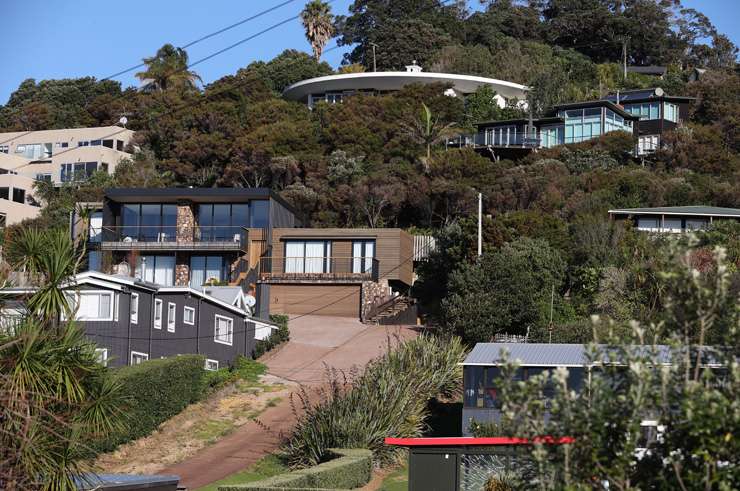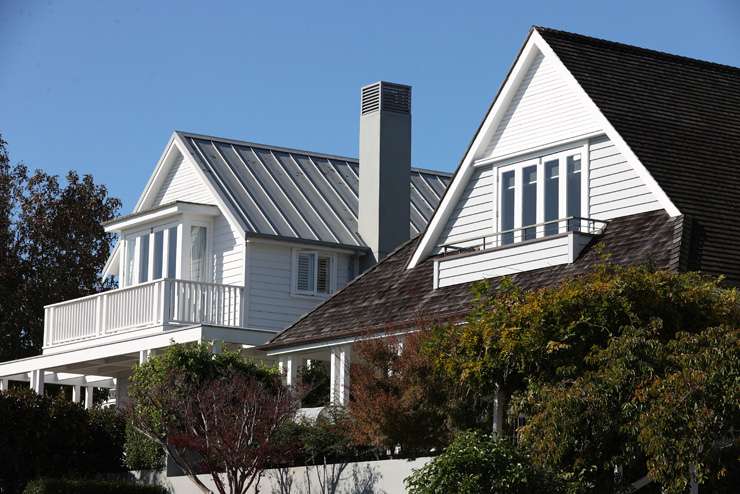Data tracking property prices over the past 25 years shows where homeowners hit the multi-million-dollar jackpot - and where their luck ran out. CoreLogic chief economists Kelvin Davidson investigates.
In most housing market data, analysis and commentary, there’s a focus on average or median property values (or selling prices) – telling you what’s happening for a "typical" property in each city, town, or suburb. But what about when we hone in on only the most valuable dwellings? What’s happened over the past 25 years for property values in the upper echelons of the market?
To look at this question, I've lifted data from CoreLogic automated valuations model for every residential property in the country (house, apartment, flat, lifestyle improved) at five-yearly intervals since 1997, ranked them by value, and picked out the upper quartile for each suburb. If you can imagine 100 properties ranked by value from top to bottom, the upper quartile would be the 25th property in that list, and is a well-accepted statistical measure of the top end of any distribution.
We stress that this is every residential property in the country, not just those that have recent sales or a "bank grade" estimated value. This kind of data covering every property and all the way back to 1997 gives us some very powerful insights. Note that although we’ve included every property in the raw dataset, to make it meaningful for an article such as this, we’ve only used suburbs that have at least 200 dwellings, and the tables show only the top 10 suburbs for upper quartile property values at each point in time.
Start your property search
Twenty-five years ago, Leo and Kate were boarding the Titanic, Bic Runga was in the charts, Jim Bolger was Prime Minister and the suburb with the highest upper quartile property value was Oriental Bay in Wellington, at $869,388. Clearly, by today’s standards, that seems like an absolute steal for a top-end property in that part of the country. In fact, five of the 10 top-end suburbs actually had an upper quartile property value of less than $700,000. Auckland’s pre-eminence was also clear 25 years ago too, with nine of the top 10 in our largest city.
--------
Despite some major global set-backs over the five years to 2002 (e.g. 9/11, Afghanistan), the New Zealand property market chugged along and top-end property and suburbs were certainly part of the upwards drift. Auckland’s dominance faded just a little in the five years to 2002, with Whangapoua, in Thames-Coromandel, and Lowry Bay, in Lower Hutt, climbing into the top 10. But the stayers saw solid growth, with Oriental Bay and Herne Bay’s upper quartile property value climbing above the $1 million mark.

Villas in Saint Marys Bay, Auckland. Photo / Ted Baghurst
--------
The five years to 2007 were certainly what you’d call a boom. By now, each of the top 10 suburbs had an upper quartile property value of around $1.4m or more, and Oriental Bay and Whitford had both topped $2.1m. Wainui, in Gisborne, and Langs Beach, in Whangarei, had reached the top 10 for upper quartile values at this point in time, highlighting that beachside locations were seemingly quite popular at that stage. Meanwhile, the presence of areas such as Karaka and Dairy Flat on the top 10 list reflects their tilt towards lifestyle properties – 82% of the stock in Karaka, 84% in Dairy Flat at the time.
--------
The huge growth from 2002 to 2007 wasn’t repeated in the five years to 2012, which isn’t surprising given the GFC and Christchurch earthquakes. The top 10 suburbs for upper quartile values stayed reasonably consistent over this five-year period, with Auckland still dominating. Over this period, Herne Bay’s upper quartile value rose by about 15%, taking it above $2.1m, and to the top of the list. Oriental Bay’s value declined in the five years to 2012, but Christchurch made its first appearance in this time period (Scarborough making No.10).

CoreLogic chief economist Kelvin Davidson: "A mortgage secured against a property valued at $3.5m or more is probably going to be a pretty large mortgage!" Photo / Peter Meecham
--------
The five years to 2017 encompassed a significant property upswing around the country, especially in Auckland earlier in that period, and other parts of the country later. By now, even the 10th suburb on the top 10 list had an upper quartile value of more than $2.5m, and Auckland had eight of the 10. Herne Bay held the No.1 spot again, with a 58% rise in its upper quartile value from $2.15m in 2012 to $3.4m in 2017. Waiheke Island and Remuera also recorded big increases in the five years to 2017. Queenstown made its first appearance, with Lake Hayes making No.10.
--------
Clearly this was another five-year period where property values have increased strongly, and our top suburb for upper quartile property values remains Herne Bay, now well in excess of $5m. Keep in mind this is the upper quartile too – meaning 25% of residential properties in Herne Bay have an estimated value greater than $5.37m. Lake Hayes has got closer to the top of the list in recent years, while Oriental Bay has also held on too. Even No.10, Omaha, now has an upper quartile property value of about $3.5m.
Who's buying and why?
Overall, the "usual suspects" certainly make regular appearances in these lists at each time period – Herne Bay, Saint Marys Bay, Remuera, Waiheke Island, Oriental Bay, as examples. The dominance of Auckland in terms of New Zealand’s top-end real estate is pretty easy to see, with some appearances for other areas, e.g. Wellington, Queenstown and Thames Coromandel.
So what might be the key drivers for these top-value suburbs? In the end, it’s hard to draw out just one or two factors, as they can differ so markedly from suburb to suburb – although one thing’s for sure, there is a prestige appeal which buyers are prepared to pay for.
But we do know who’s active in these upper-end areas, even if the driving forces aren’t always clear. Take Herne Bay, for example. In the 2021 calendar year, 37% of property purchases were made by movers, or existing owner-occupiers who were relocating. That’s a high proportion and seems logical. After all, the popular perception would be that posh suburbs don’t really fit the economics of property investment (e.g. high prices, low yields), tending to be better for owner-occupiers with significant equity behind them.

Houses on Waiheke. The island has become an increasingly desirable and expensive housing market. Photo / Fiona Goodall
However, 42% of purchases in Herne Bay last year were actually made by multiple property owners (MPOs), some with cash, some with a mortgage. Of course, when we think of multiple property owners, we normally think of investors, perhaps of the Mum and Dad ilk, who have just purchased their first rental or maybe already have a small portfolio. But although we can never be sure exactly what every property is being used for (as opposed to ownership, which we do know), a typical Herne Bay standalone dwelling purchased by somebody who also owns other property elsewhere probably isn’t a standard rental. Indeed, they may well be trading up to live in Herne Bay, but retaining their other property too.
What does the future hold?
How might the top end of the market fare over the next year or two, amidst a wider property slowdown? On one hand, to the extent that cash/equity plays a bigger role in top-end suburbs, higher mortgage rates and reduced credit availability may not be expected to be too much of a hindrance. Indeed, even if there are fewer buyers circling around, would-be sellers can probably also sit tight and just wait out the weak patch – meaning that a downturn takes the form of reduced sales activity rather than sharp declines in price on achieved deals.

A grand home in Herne Bay, Auckland. Those looking to buy a luxury pad in the suburb better come with a big budget. Photo / Fiona Goodall
However, upper-end property has certainly gone through soft patches before, e.g. 2007 to 2012, which was also a period of economic uncertainty and reduced credit availability, much like we’re experiencing at present. In a nutshell, there are certainly some eye-watering property values when you start to get into the upper tiers of the market. But a slowing economy and subdued business confidence can affect anyone and everyone, so it seems fair to assume that the next six to 12 months at least could also be a testing time for the top end of New Zealand’s property market. Indeed, a mortgage secured against a property valued at $3.5m or more is probably going to be a pretty large mortgage!
- Kevin Davidson is chief economist at CoreLogic





































































